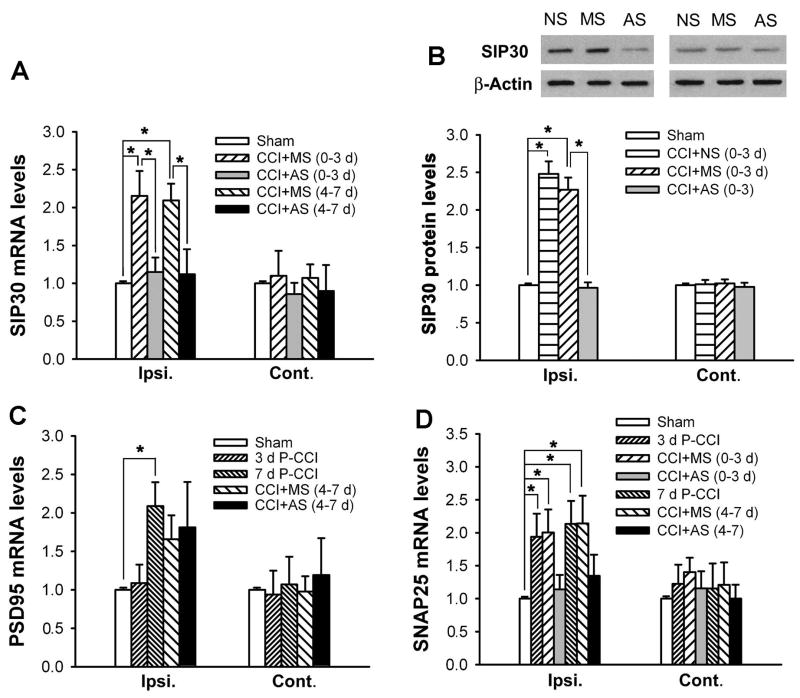Fig. 6.
SIP30 antisense oligonucleotide knock down of SIP30 and SNAP25 levels. Abbreviations: NS, normal saline; AS, antisense oligonucleotide; MS, missense oligonucleotide. (0–3 d) indicates that rats received daily intrathecal injection from day 0 (6 hrs before CCI surgery) to day 3 post-CCI; (4–7 d) indicates that rats received daily intrathecal injection from day 4 to day 7 post-CCI.
A, SIP30 mRNA was increased after CCI, and the increase was reduced by antisense oligonucleotide. After four times of intrathecal administration of SIP30 antisense (AS) or missense (MS) oligonucleotide, rats were sacrificed and the lumbar spinal cords were dissected at six hours after the last injection. Real-time PCR amplification for SIP30 mRNA showed a significant decrease in the ipsilateral spinal cord in CCI rats receiving SIP30 antisense oligonucleotide compared with animals receiving missense oligonucleotide. *, significant difference (p < 0.05).
B, Western blot for SIP30 protein indicated a significant decrease in ipsilateral spinal cord in CCI rats receiving SIP30 antisense oligonucleotide compared with animals receiving missense oligonucleotide or normal saline. Upper panel, representative Western blots of SIP30 protein. β-Actin was used as the internal control. Lower panel, quantitative results of SIP30 protein. *, significant difference (p < 0.05).
C, Real-time PCR amplification for PSD95 mRNA showed a significant increase in ipsilateral spinal cord after CCI surgery. Intrathecal injection of SIP30 antisense oligonucleotide every 24 hours for 4 times did not appreciably affect PSD95 mRNA levels. *, significant difference (p < 0.05).
D, Real-time PCR amplification for SNAP25 mRNA showed a significant increase in ipsilateral spinal cord after CCI surgery. Intrathecal injection of SIP30 antisense oligonucleotide every 24 hours for 4 times caused a trend to decrease in SNAP25 mRNA in ipsilateral spinal cord of CCI rats, although that did not reach statistical significance. *, significant difference (p < 0.05).

